PETE SKELLON offers a personal view of a much-missed preservation pioneer.

We often muse over recollections and nostalgia for the days of steam or, perhaps, the diesel era of our youth. Such emotions have formed the basis from which grew the success of our heritage railway industry. However, rarely is this attribution proffered to a lost venue, one created specifically for the preservation of those days of old. The Dinting Railway Centre, however, is one such location. Its closure in 1990 has left some observers wistful over past memories of attending with family or friends in, what was then, the rarefied atmosphere of steam.
The growing fondness for Dinting tends to manifest itself as ‘chat’ on various media sites. Some propose that the centre should be revived, while others express conjecture as to the reasons for its closure, or astonishment at how quickly nature has taken over what was once an important setting for nurturing embryonic enthusiasts.
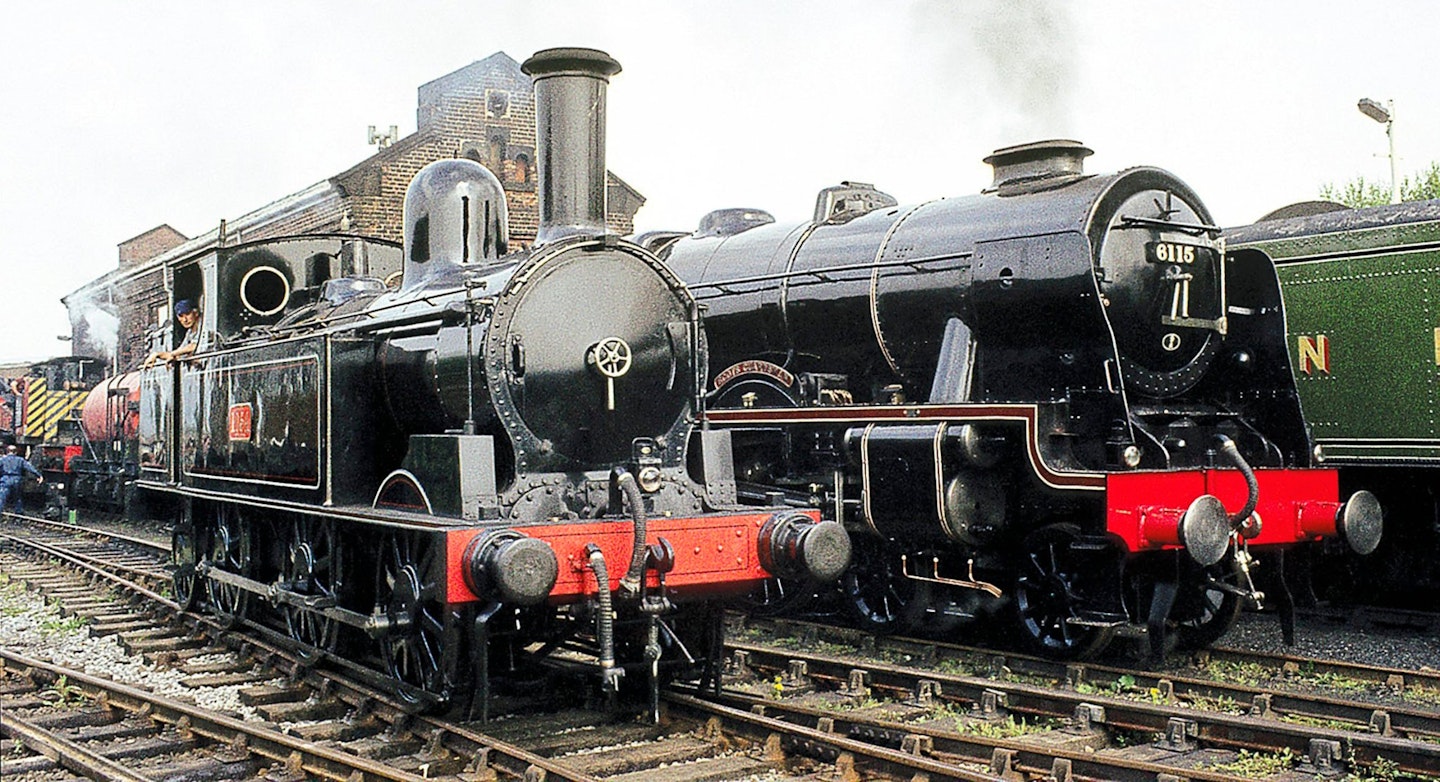

Two views of Hudswell, Clarke No. 1704 Nunlow and the ex‐Baddesley Colliery Avonside No. 1883, being prepared on the ash pit. This activity was visible to observers from the car park, thus providing the ideal advertisement for any teenager wishing to emulate the young cleaners such as Nick Morgan and Tony Smith, here cleaning Nunlow’s wheels and frames. PETE SKELLON
Why should that be? What was the allure of the place to cause this reaction? And why did it close when all around were apparently prospering?
The railway press has reported on the rise and fall story on a number of occasions. Usually these have focused on the negotiations over the rent, the subsequent dispersal of the collection, and the move and rebirth of the Bahamas Locomotive Society – the centre’s operator – together with the transfer of its core objects to Ingrow on the Keighley & Worth Valley Railway.

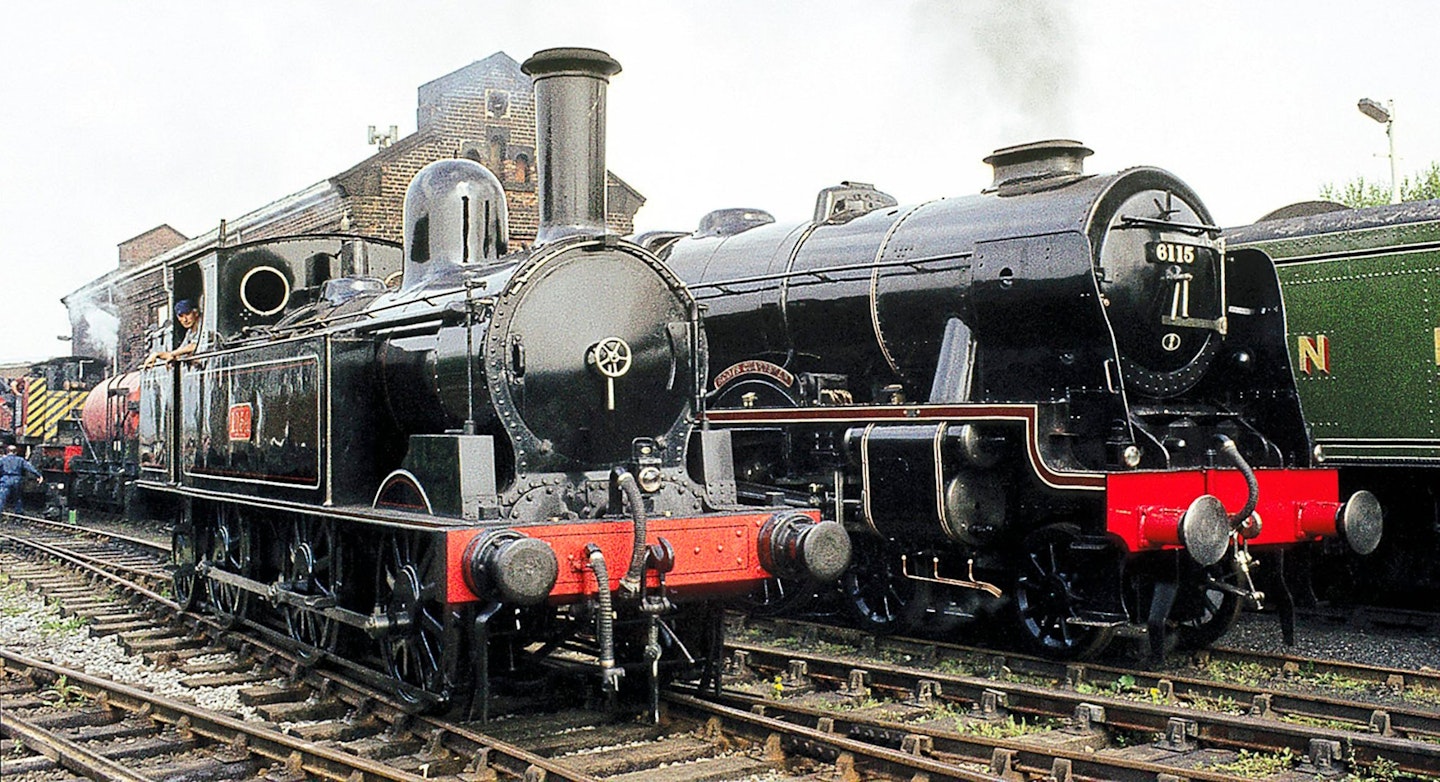
The return to steam of No. 6115 Scots Guardsman was a major milestone in all that was achieved at Dinting. On the occasion of its first main line outing on October 14 1978 it is seen here receiving a quick clean at York in the days before such support crew activities became formalised. PETE SKELLON
But what of the people, those volunteers who built, maintained and developed the site, and the visitors who came along to enjoy the fruits of all that labour? What was the effect on those who built the place and witnessed its demise?
We often overlook that ‘railway preservation’ is a product of people. While the majority will record the spectacle portrayed by locomotives, rolling stock, signalling, etc, there is less recorded about the people, a key component of all railway systems.
In a previous article (SR560) I recounted the purchase of ‘Jubilee’ No. 45596 Bahamas and the group who would create a home for it at Dinting. It highlighted how circumstance and personality often affect the outcome of any enterprise, in particular where volunteers and ‘authority’ negotiate across the table. It was, of course, the volunteer who created the heritage railway movement, not the entrepreneur. Back in the late 1960s and early 1970s, nobody had the cash to invest in place, product, and people to inaugurate and build the industry in which we now luxuriate, and what little investment was available was harnessed by the efforts of those volunteers.

Brake van rides were a highlight for any visitor to Dinting and offered what is now referred to as an ‘immersive experience’. Here Hudswell, Clarke No. 1704 Nunlow propels the NE brake van and slows at the crossing for the driver to take instruction from Harold Moss, this no doubt with regard to the shunting arrangements required at the end of the day. BILL SKELLON
The right stuff
Enthusiasm, skills and luck were required to succeed. Those three facets fortunately shone sufficiently to establish the Dinting Railway Centre in 1968. The venture was as remarkable as those at Carnforth, Didcot or Tysley; if not more so when it is considered Dinting had little in the way of infrastructure in the beginning.
While other railways began to evolve and were rising from the ground (literally), the concept of a ‘working museum’ was new. These ‘centres’, where visitors could get close to a large operational express engine without it departing out of view for an hour or so before returning were, and remain, few in number. Dinting forged its place among the growing railway preservation scene. The place was not unique, but it was sufficiently different that its closure, now almost 35 years ago, left something of a vacuum that has never effectively been filled.
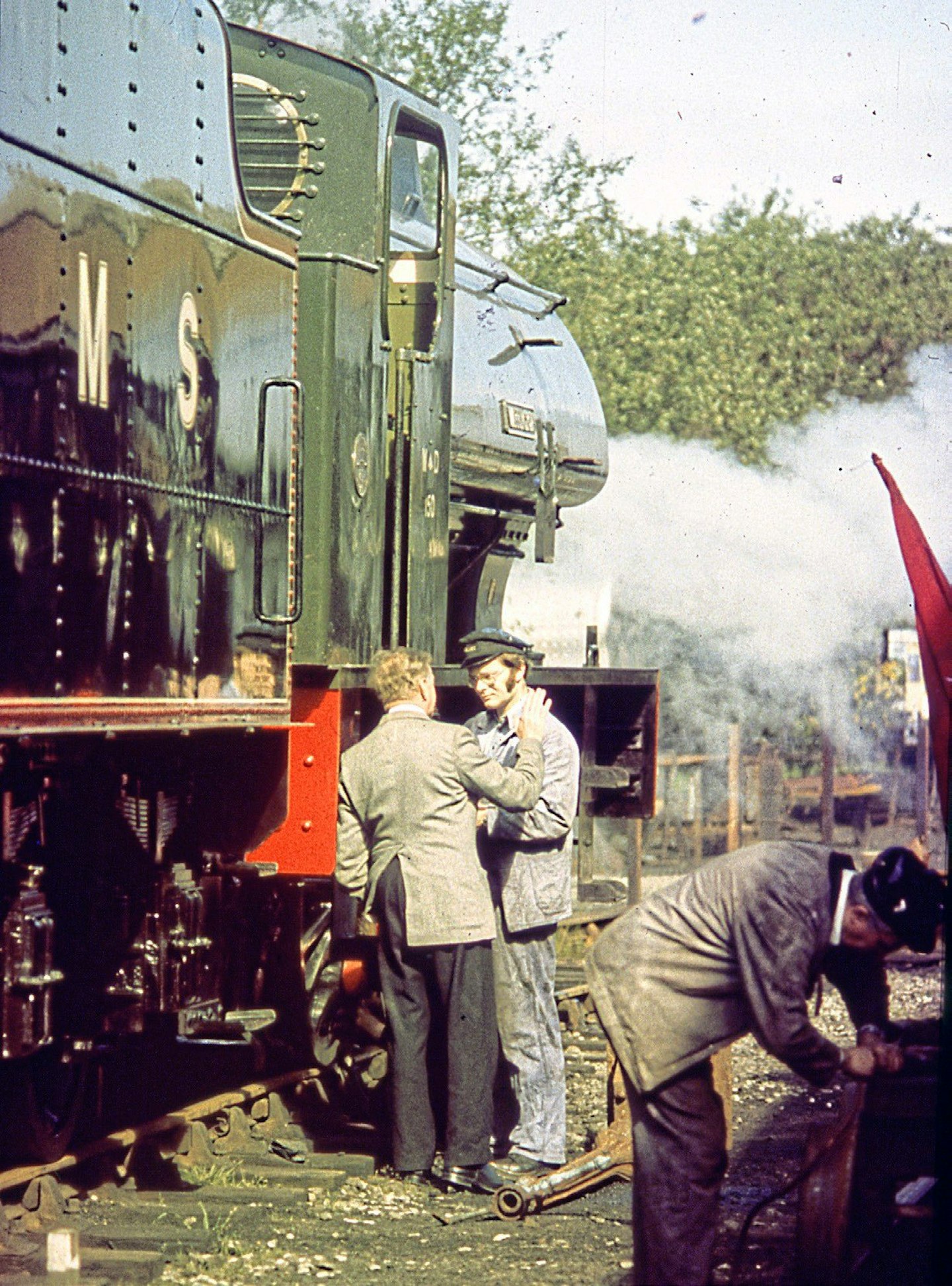
It’s Enthusiast’s Day 1981 and the caretaker, Harold Povey, is in conversation with chief engineer Steve Allsop by the side of ‘Austerity’ 0 ‐ 6‐0ST WD150 Warrington. PETE SKELLON
From the outset, Dinting was created to attract the general public, with one member of the founding society, Eddie Hoskins, noting in 1969 that it would be they, the visitors, who would pay for the privilege of allowing members to enjoy their hobby. The building of the exhibition hall in the early 1970s, partially erected as a DIY job by volunteers and enabling all the locomotives to be under cover, was a primary aim; a souvenir shop to maximise income being part of that facility. Next would come a picnic area where families could gather adjacent to the demonstration line, a setting enhanced by views across Dinting Vale and the surrounding Derbyshire countryside, an attraction in its own right. Eddie’s Lawn, as it was known by some members, was cheap and easy to create, but it would be many years before funds became available for the construction of a dedicated refreshment room and adequate toilet facilities, amenities that came to be expected by a more demanding public in a growing tourist industry.
In today’s world of lottery funding or grant aid from specialist agencies, it is hard to recall that in the 1970s these game-changing sources of income were all but unheard of. That the highpoint of visitors attending Dinting was in 1979 is all the more noteworthy because this had been achieved solely by the combined efforts of society volunteers who created the attraction to entice them. The effort expended formed a strong spirit of camaraderie among the working members, a trait that no doubt existed in many similar enterprises, but it was nevertheless a key feature of survival through all that was to come.

Andrew Barclay 0 ‐ 4‐0ST No. 2258 Tiny, freshly repainted in a livery typical of the GER. In the foreground is one the LNWR ground signals controlling yard operations. This signal was operated by the ex ‐GCR electropneumatic interlocking system equipment installed by S&T engineer Pete Essex. BILL SKELLON
Community spirit
This sense of community should not to be underestimated. It made achievable such goals as the overhaul of rebuilt ‘Royal Scot’ No. 6115 Scots Guardsman and its return to the main line in 1978. This helped the team to develop the skills necessary to tackle the overhaul and return to steam of the LNWR ‘Coal Tank’ – a task completed in two years, and one which received numerous plaudits for the standard of it restoration.
With the completion of the ‘Coal Tank’, and its inclusion in the ‘Rocket 150’ event at Rainhill, greater things were envisaged for 1980. Yet despite the array of visiting engines working to or from Dinting for the event assembly site at Bold colliery, a decline in public attendance began to cause concern to those who managed the centre.
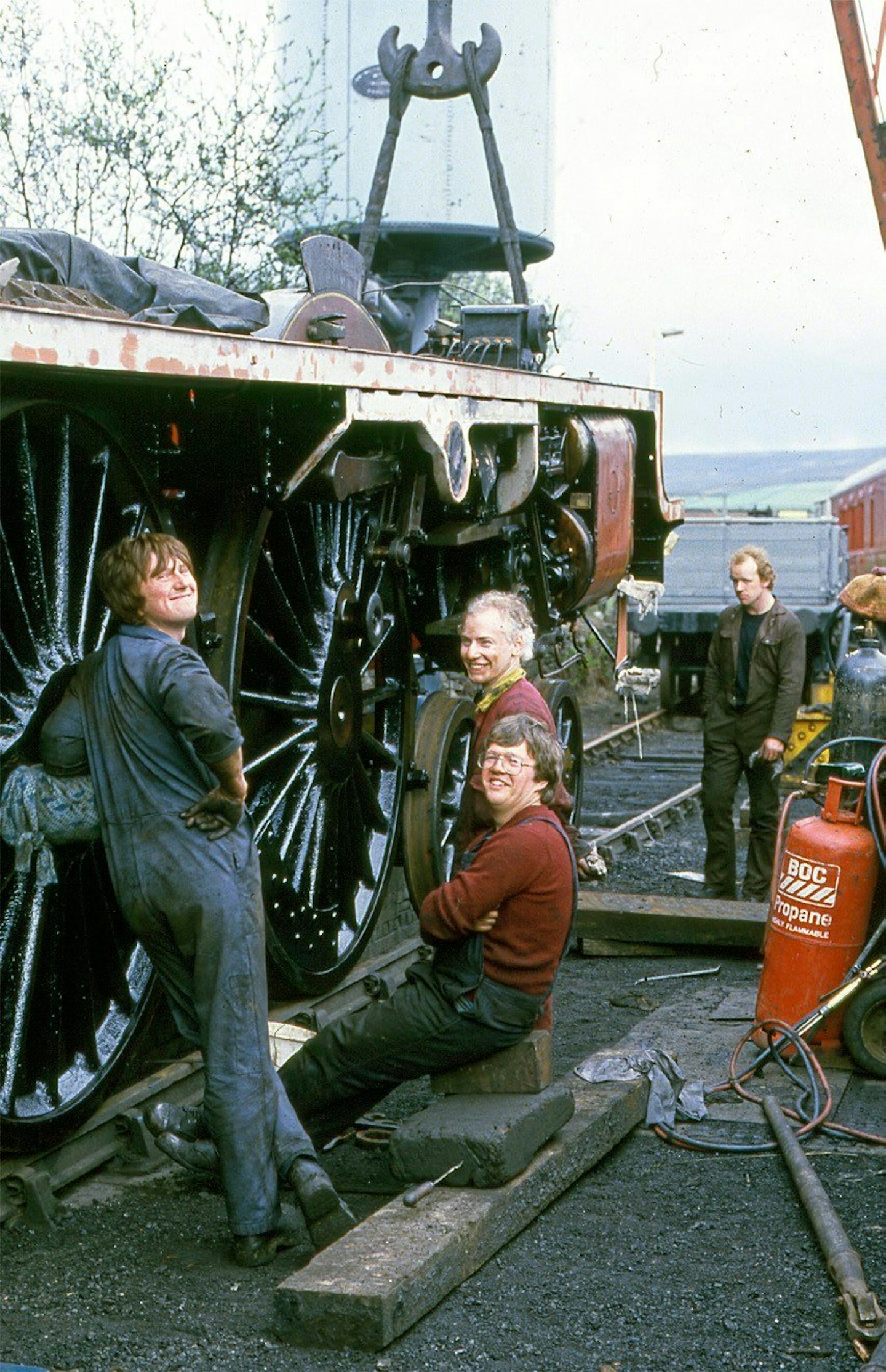
The working week of 1986 with the steam breakdown crane in use to help replace the bogie beneath No. 45596 Bahamas. It’s all smiles from Steve Peach, Gordon Greenhalgh and George Bowler, although Garry Howard appears to be more concerned perhaps over some scratches in the paintwork on the bogie wheels. STEVE ALLSOP
The management committee, supported by two or three sub-committees, ran the business to the best of their abilities, albeit within the confines of the time each had available from the usual pressures of personal life.
Peter Beebe, an engineer, took on the honorary position of treasurer in 1980 and in his report to the society newsletter pointedly remarked, “…we could describe ourselves as a bunch of amateurs running a business and, so far, we have not made a bad job of it, but as trade is becoming more difficult I sometimes feel we could benefit from certain specialist advice or guidance. Unfortunately, none of the committee is a banker or an accountant, or runs an advertising agency, or is a marketing director…”
The effect of competition from other tourist venues was having a negative effect. The nearby Alton Towers had just opened as a theme park and the growth of industrial museums was under way as a reaction to the demise of engineering and manufacturing industries. Also, what would be a two-year economic recession began in 1980. And then the landlord, Jack Warburton, raised the rent by 50%.
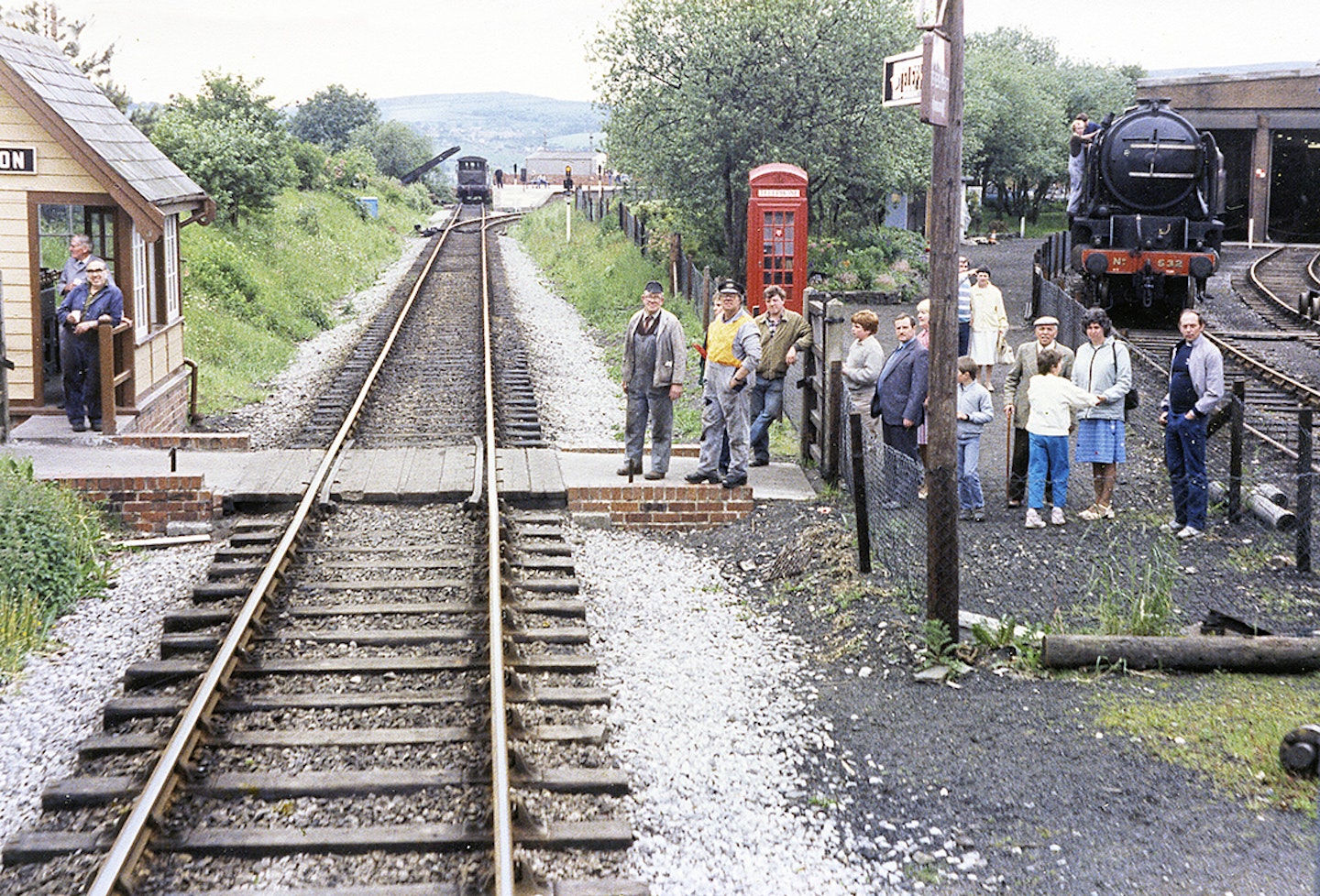
A mid ‐1980s view from the veranda of the NE brake Van, as it is propelled towards Platform 2. The site had reached what turned out to be the high point of its maturity with the fully signalled demonstration track, the installation of a rare telephone box with stamp dispenser and direction signage in traditional railway style. LNER No. 532 Blue Peter is in the yard on No. 3 road, being cleaned by Garry Howard. BILL SKELLON
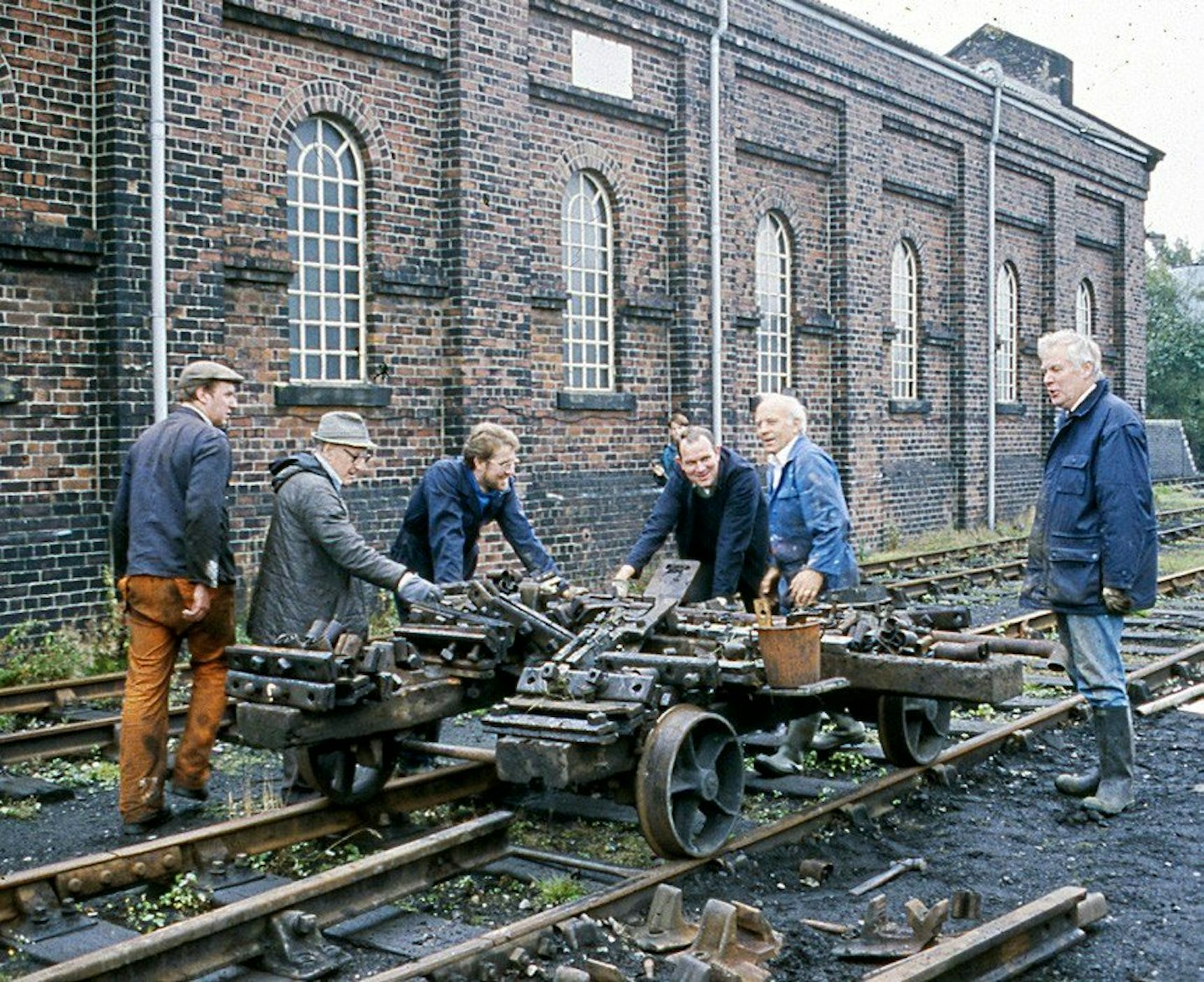
Recovering some of the permanent way and S&T equipment in September 1990. Chairman Simon Bryant, on the right, oversees the group whose smiles belie the trauma of uprooting all that had been achieved over the previous 21 years. GORDON COLTAS/BLS ARCHIVE
One way to overcome rent increases is to purchase the land. Despite this proposal, the offer was declined for the landlord had no wish to sell. Maybe this was not too much of a concern; Jack was a friend, a vice-president and, as a solicitors clerk, undertook on behalf of the centre all the legal negotiations with BR over siding and bridge maintenance agreements; he was trusted. One drawback with the rent agreement was that it was for a period of five years, with the option to renew. Such a short-term agreement was not conducive to attracting grants. Long-term tenure of venue was, and is, usually a stipulation for any grant support. This source of funding, which was then becoming available at the behest of a government wishing to support tourism, was unattainable to the society. Income could only be generated by visitors coming through the gate or by outreach (a term then unknown, but what we referred to as ‘outside sales’).
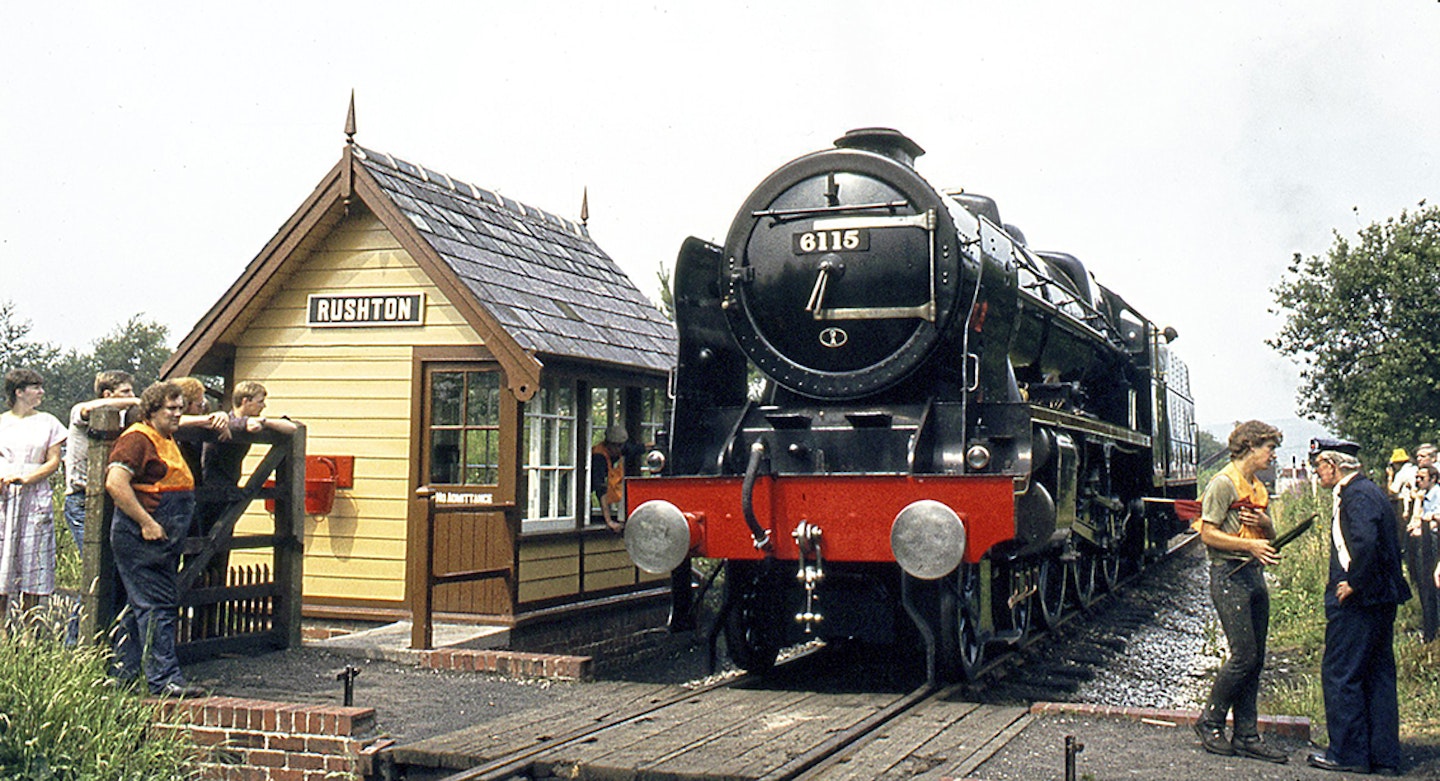
The former signal box from Rushton station was refurbished and used to control the signalling system on No. 4 Road. Here No. 6115 Scots Guardsman sets back to pick up its brake van while crossing keeper Eddie Rutter controls his gate and Mike Stevens converses with Harold Moss. STEVE ALLSOP
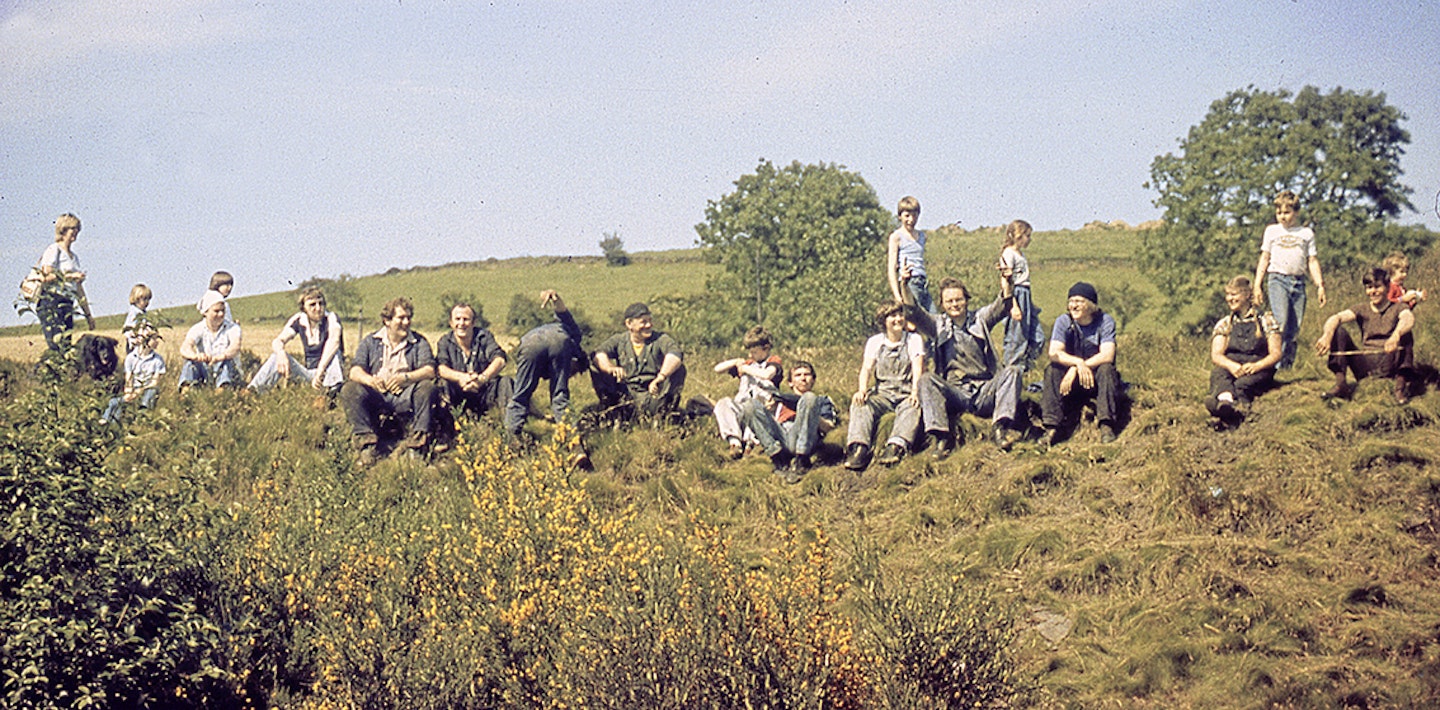
The rural aspect of the site was used to advantage in good weather. Here some of the lads have their lunch break on the plateau behind the ‘old shed’. This was a useful vantage point to view operations in the yard or, as here, ideal for hurling abuse at any passing photographer eager to record their spirit of fun. PETE SKELLON
If these economics appeared gloomy to the few responsible for overseeing the ‘business’, then for others the day-to-day (weekend-to-weekend) tasks were not only enjoyable they were ‘fun’. The hard core of volunteers centred on the locomotives. With engines being prepared for the Sunday steaming, or at Bank Holidays, these activities were very much in public view. Visitors would see engines being cleaned, often by youngsters. This unhindered view, that was even ‘hands on’ for some, became a magnet to others wanting to join in. The result was an almost constant supply of teenagers willing to become involved and experience something new, different, and ‘fun’. And although an older and experienced group undertook their responsibilities to the full, they also took under their wing these ‘enginemen of tomorrow’, nurturing them in the ways of locomotives and the world, with discipline and mutual respect – but still with an air of fun.
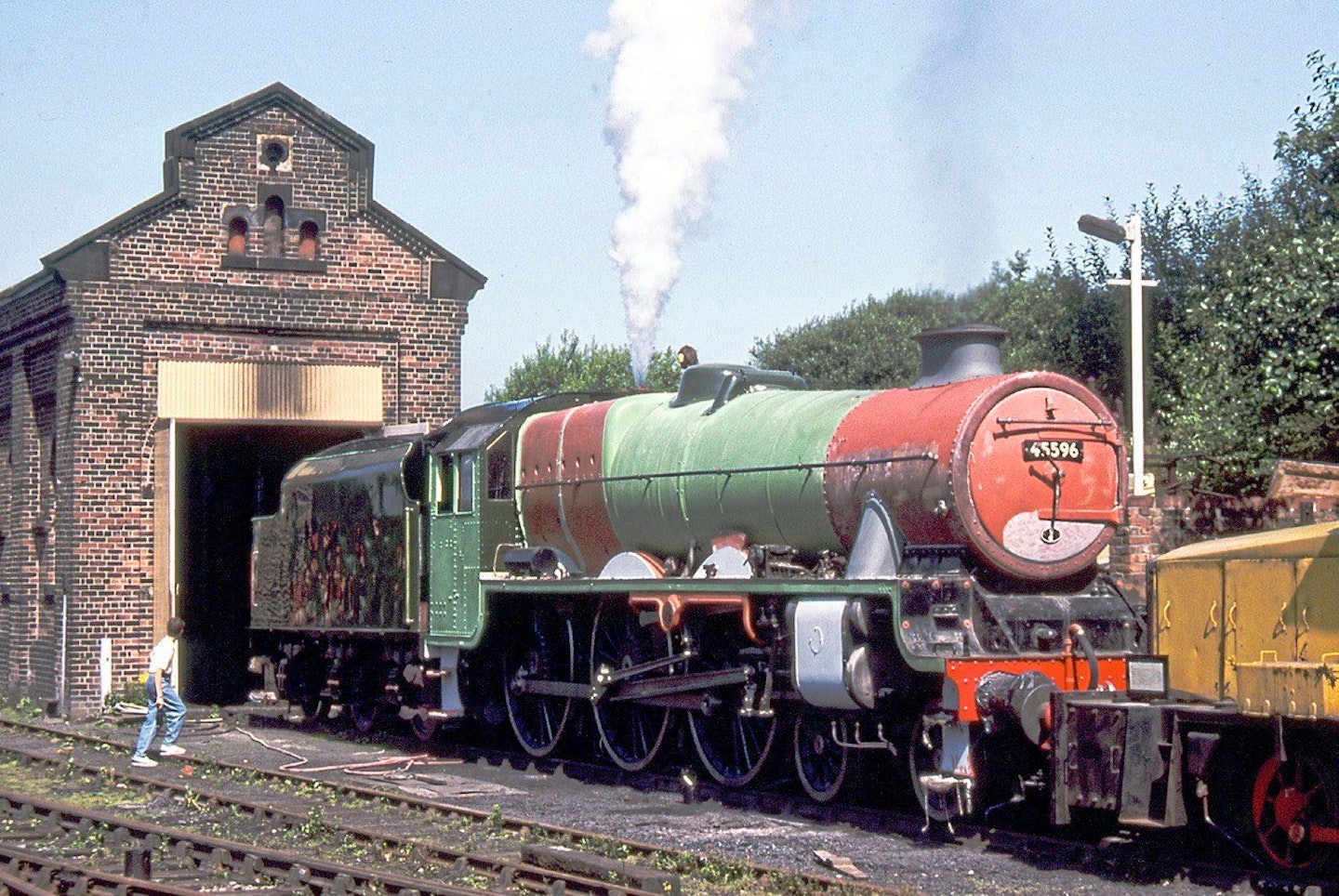

Building Bahamas
Following the completion of the ‘Coal Tank’, a start was made on the overhaul of Bahamas. As the raison d’être for establishing Dinting, a start on Bahamas was significant. The engine had last steamed seven years previous, following the open day at Reddish Electric Depot in September 1973 and the expiry of its boiler certificate. With the restoration team having gained substantial experience, the original concept of having others undertake the known significant boiler repairs was modified. Steve Allsop, as chief engineer, considered the task could now be achieved in ‐house, bringing in specialist contractors only when required. And with the purchase of the Allerton breakdown crane, the members had the necessary lifting capability to handle the job, albeit subject to the vagaries of the Derbyshire weather as all the boiler work was undertaken outside. Repairing boilers in the snow! Told you it was fun!
And while the job would endure for the next eight years, development of the site to improve the amenities continued as the limited funds and labour would allow. Use was made of social assistance from groups such as ‘Manpower Services’ and the ‘probation lads’, whose past misdemeanours would hopefully be changed for the better by such public service. These groups were put to work on development projects, such as the construction of the platform at the end of the demonstration track or renewing boundary and lineside fencing.

This input was just what was needed, for throughout the 1980s there was a gradual decline in volunteers willing to undertake the innumerable maintenance tasks. This decline continued right through to the end of the decade when, on many Saturdays, there was nobody available to collect entrance fees, and on some Sundays, when the shop remained closed because of unavailability of staff, each resulting in loss of income.
And income was needed. The expenditure on essentials such as rents and rates was growing at an alarming rate. Negotiations over the renewal of the lease had broken down in 1983 and the society was given notice to quit the site by the landlord. The action by the society’s solicitors failed in their duty to respond and so the protection of the Landlords and Tenants Act was lost. The landlord could and did increase the rent as he wished, the 500% increase over the ten years from 1978 was substantial. The only comeback was to take action against the solicitors. The resulting payout came just in time to fund the move away from Dinting and prepare for setting up at Ingrow.
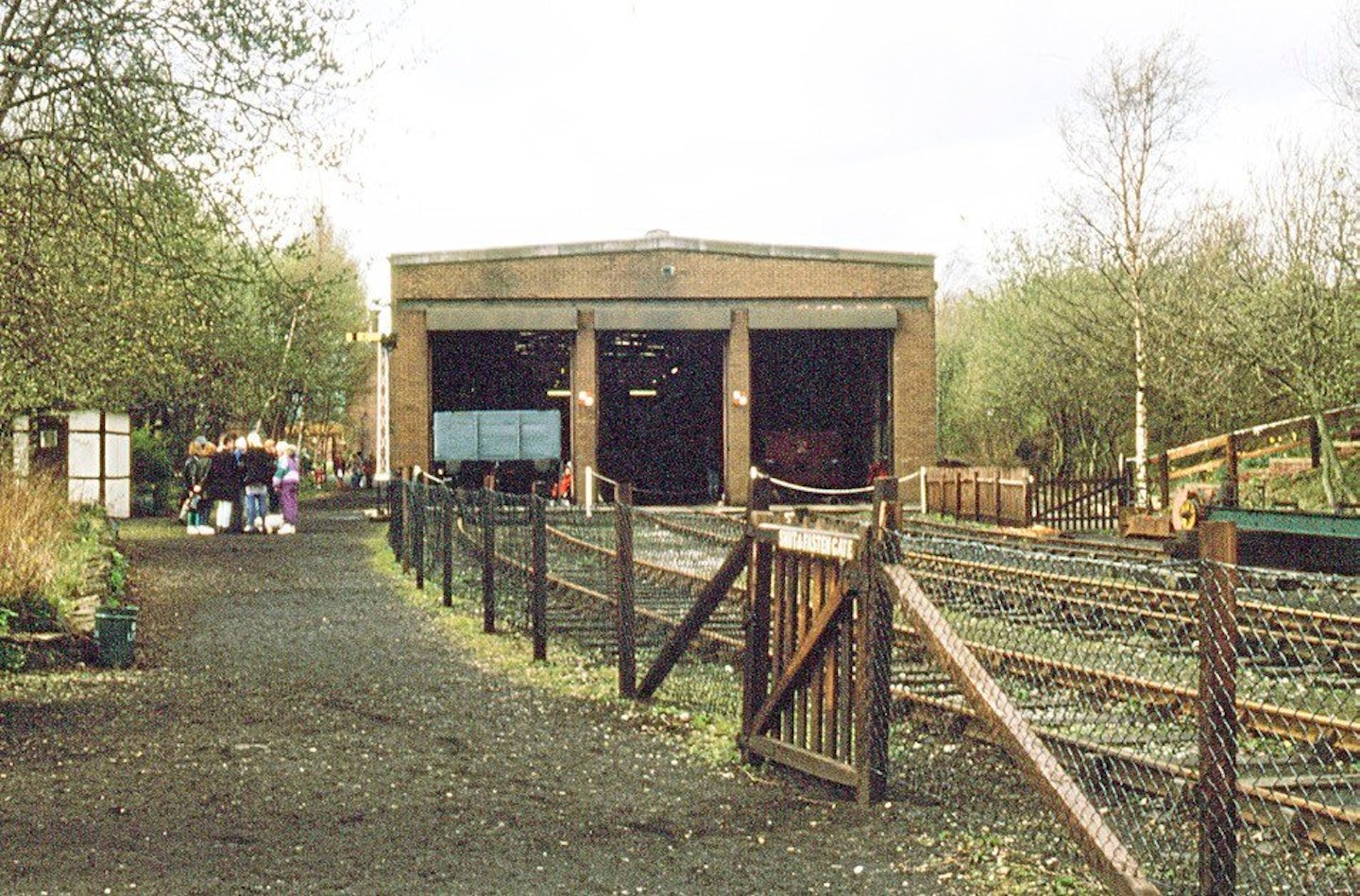
So what brought about the move?
The acrimony with the landlord over rent turned to hostility following damage to a model car racing track that he had laid on the car park. This track was much larger than had been envisaged and, after some visitors used it to park their cars during a busy ‘Santa’ weekend, the damage so caused resulted in a notice to vacate the site.
This was received only a few months after the society celebrated its 21st birthday, an event in which the overhaul of No. 45596 Bahamas was completed. Talk about highs and lows!
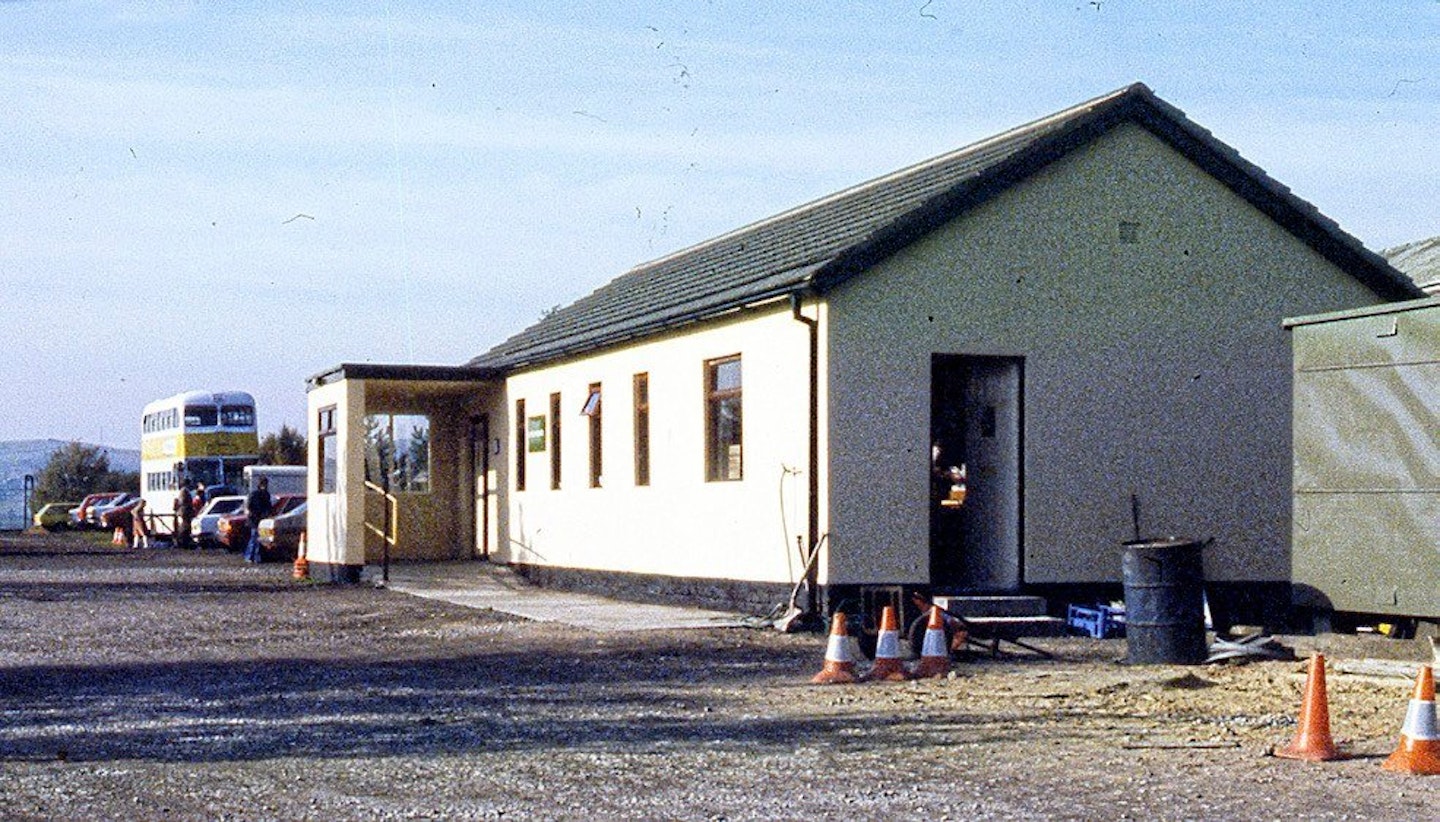
The refreshment room constructed on the car park and opened in 1983. This allowed the Enginemen’s Room, adjacent to the ‘old shed’ to revert to its former purpose, having previously been used to serve the public cups of tea and sandwiches amidst the needs for the members mess facilities. BILL SKELLON
The packing of the ‘thousand ton suitcase’, the hunt for a new home, the acrimony over what items could be taken and what had to be left behind, was faced, endured and accomplished in a most remarkable manner. The fortitude shown proved the value of community embedded in the members. For some of an older generation, the upset was too much for them to consider starting all over again. And for those younger?
Well, we had grown up together; we had worked, rested, played, even dated. We mocked our committee, we mocked our competitors and we mocked establishment. Moreover, we mocked ourselves. We were family. It bred a special kind of humour, one not always understood or appreciated by others, but it was ours, something we owned. We were young, eager, bursting with life and ideas, with a common cause, a sense of satisfaction of a job well done for each project completed. We were like sponges, soaking up the knowledge of others who had been there, done that, until the time came to squeeze the sponge and show those coming up behind how it should be done.
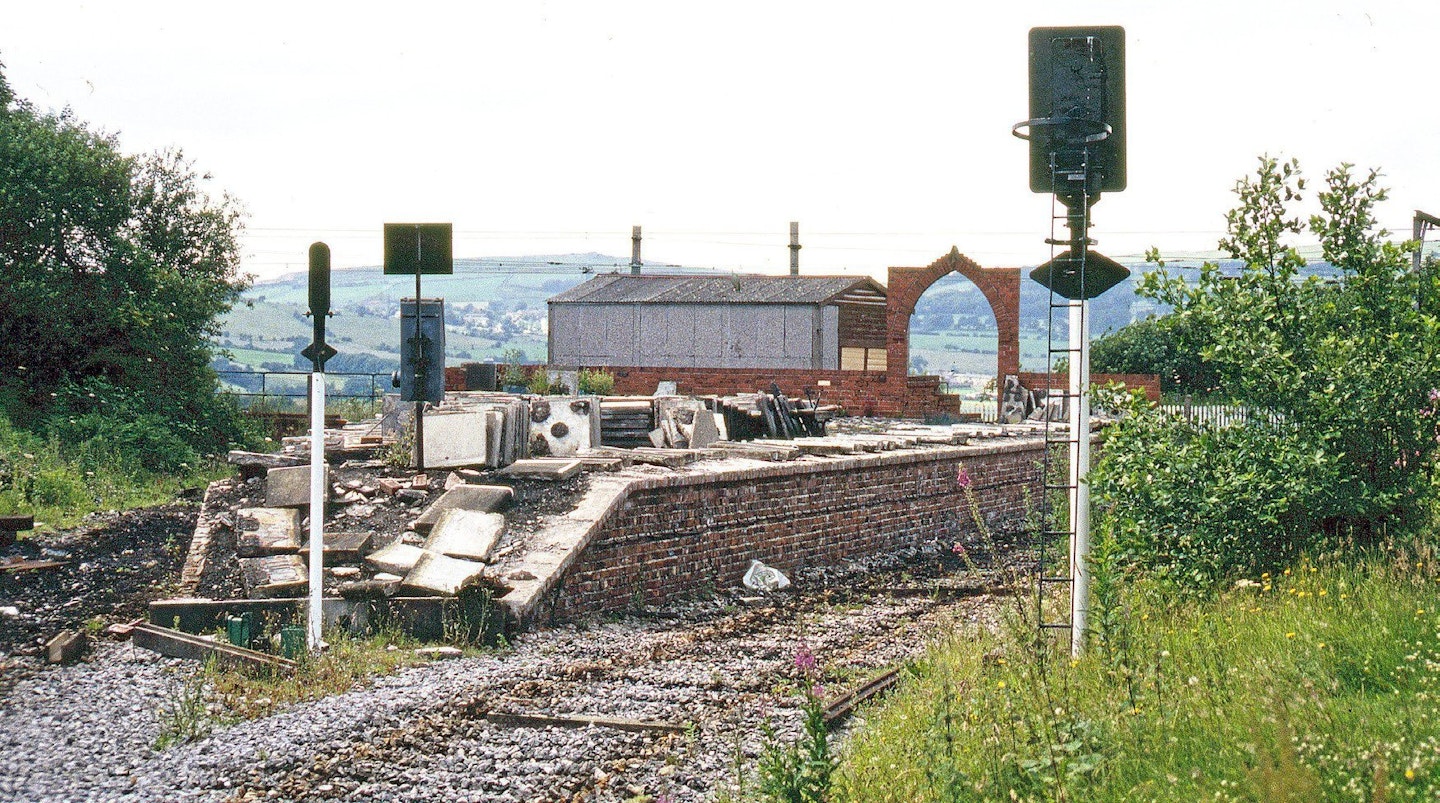
Would the like ever happen again? In view of the way society changes, it’s doubtful. It was the right place at the right time with the right people. Things don’t last forever and the business at Dinting just ran out of steam. And the people? Well, we keep on keeping on. What other way is there?
As Simon Bryant, 36 years our chairman and subsequently our president, has stated, “We’ve survived because of our love of the steam locomotives we look after and – dare I say it – our love of each other. That’s how we’ve survived, and if you have both those things, then you’ll succeed.”
